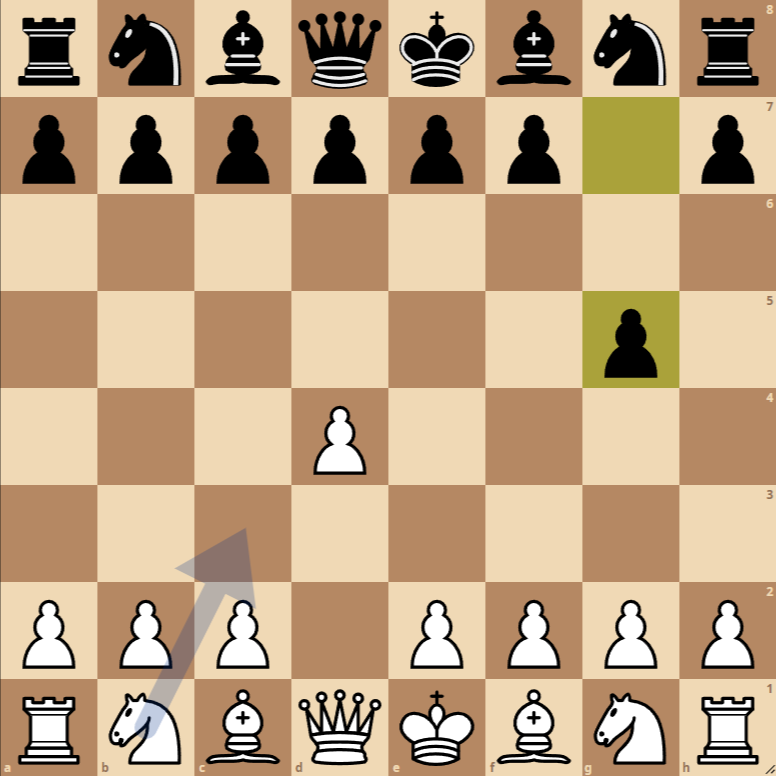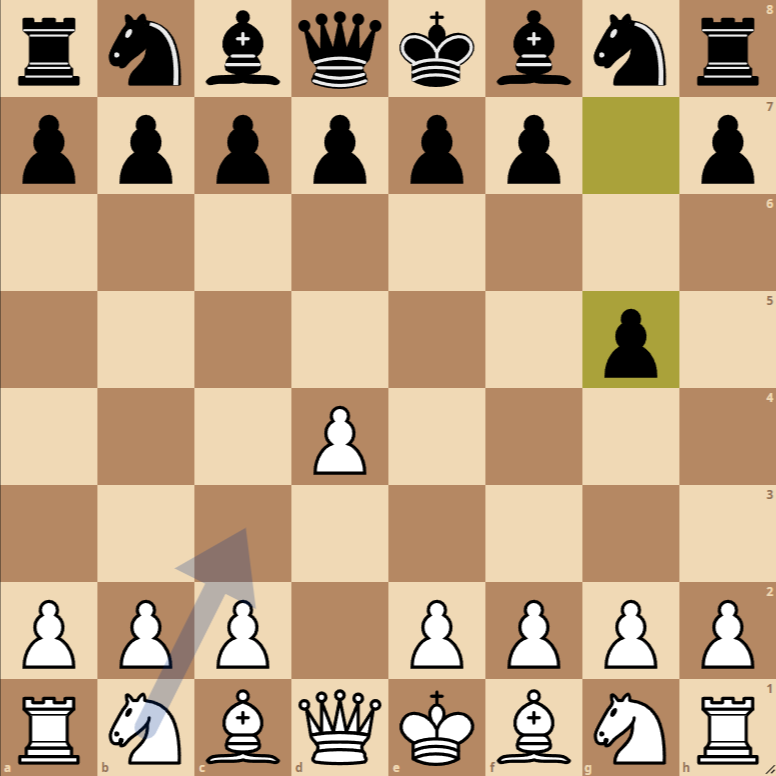How to Play the Borg Defense – Borg Gambit Opening

The Borg Defense, also known as the Borg Gambit, is an unconventional chess opening. It is characterized by the following initial moves:
- 1. d4 – White advances their king’s pawn two squares forward, occupying the center of the board. This is a common move in openings, aiming to control the center and open lines for minor pieces.
- g5 – Black responds with a bold move, advancing the king’s rook pawn two squares. This move is unusual and risky, aiming to destabilize White’s pawn structure and prepare for an aggressive game.
Variations of the Borg Defense – Borg Gambit
1. d4 g5 2. h4
A common White response to Black’s early pawn advance is to play 2. h4, attempting to undermine the advanced g5 pawn and challenge Black’s pawn structure.
1. d4 g5 2. c4
Another popular variation for White after 1…g5 is to play 2. c4, aiming for solid central control and preparing the development of minor pieces while maintaining a flexible pawn structure.
1. d4 g5 2. e4
White can opt for a more central approach with 2. e4, directly challenging the center and looking to capitalize on early development and space control while temporarily ignoring the g5 pawn.
The Borg Defense
Also humorously known as “Groeb” (Borg spelled backward) due to its unorthodox nature, this opening is characterized by Black’s initial move of 1…g5. It is an inversion of White’s Orangutan Defense (1.b4) and is rarely seen in competitive play due to its risky nature. The move 1…g5 aims to control the center from a flank but compromises the safety of the Black king by weakening the f7 and g7 squares. Despite its unconventional character, the Borg Defense offers Black opportunities to unsettle an unprepared opponent.
After 1.d4 g5
White has several options to continue the game, among which the most promising are 2.c4, 2.Bxg5, and 2.Nf3. Here’s the strategy behind each of these moves:
2.c4 (The Borg Gambit)
This move seeks to establish strong central pawn control and sets the stage for the harmonious development of minor pieces, especially the bishop on g2, which can exert pressure along the long diagonal. For Black, the early g5 pawn advance may attempt to dissuade White from playing e4 but does so at the cost of weakening the pawn structure. Black may consider directly countering in the center with …d5 or continue their unorthodox development with …h6, possibly preparing …f5 to continue an aggressive approach.
2.Bxg5 (Pawn Capture)
By capturing the pawn on g5, White accepts Black’s challenge and seeks to capitalize on the early weakness created. This move puts Black on the defensive against potential opening of lines towards their king. While White gains a pawn, they also divert a bishop from its natural development. Black can respond with …h6, forcing the bishop to decide whether to retreat or exchange for a knight, or they can attempt to accelerate their development with …Bg7 and …c5, looking to counterattack in the center.
2.Nf3 (Development and Control)
Playing 2.Nf3, White opts for a more traditional approach, developing a minor piece and maintaining central control without compromising pawn structure. This move also prepares for a short castle and can continue to apply pressure in the center with moves like e3 and c4. From Black’s perspective, the g5 advance now appears premature and potentially useful only if they can follow it up with …f6 and …h5, attempting to create counterplay on the kingside.
In summary, the Borg Defense and the Borg Gambit offer a game rich in tactical and strategic possibilities for both sides. While not considered solid in the classical sense, it provides unique opportunities to unsettle an unprepared opponent. Players choosing this defense should be prepared to play unconventional positions and have a clear plan for piece development and king safety.

